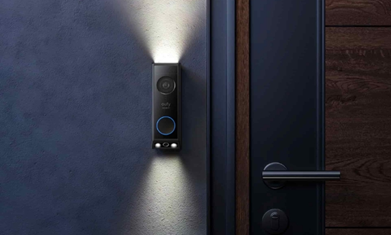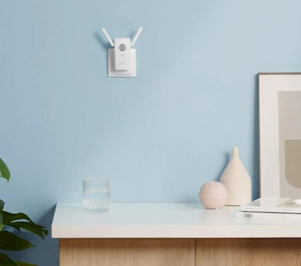Video doorbells have transformed home security, offering real-time alerts and peace of mind. Yet, many buyers rush into installation without preparation, leading to frustrating issues like poor video quality, weak Wi-Fi signals, or even missed deliveries. A little planning of doorbell installation can prevent most common problems. Consider this: a doorbell placed without checking sunlight glare may blind the camera every afternoon, while incorrect wiring can cause constant disconnections. In this article, we’ll walk through some essential steps to ensure your video doorbell works flawlessly from day one.

Your Home's Electrical Reality Check
Before buying a video doorbell, assess your home’s electrical setup. Many models require existing doorbell wiring for continuous power, while battery-operated versions need frequent recharging. If your home lacks doorbell wiring, you may need professional help or opt for a battery-powered model. Check your current doorbell’s voltage with a multimeter—most smart doorbells need 16-24V AC. Too low, and the device won’t function; too high, and it could overheat. If your wiring is outdated, upgrading the transformer may be necessary. Battery-powered options offer flexibility but come with trade-offs. In cold climates, lithium-ion batteries drain faster, requiring more frequent charging. If you forget to recharge, you might miss crucial alerts. Hardwired models eliminate this hassle but demand proper wiring.
The 360° Visibility Assessment
Package Thief vs. Visitor Recognition Angles
Positioning your doorbell correctly ensures it captures useful footage. Too high, and faces become blurry; too low, and packages left on the ground may be out of view. The ideal height is about 48 inches (1.2 meters) from the ground—high enough to see faces but low enough to spot packages. Angle the camera slightly downward to catch both visitors and delivered items. A doorbell facing straight ahead might miss a thief crouching to swipe a package. Test the view by placing a box near your door and checking the live feed. Wide-angle lenses help, but placement still matters. If your doorbell is mounted on a narrow wall, consider an angled mount to expand coverage. Some thieves approach from the side to avoid detection, so ensure the camera sees beyond the immediate doorstep.
Sun Path Analysis for Glare Prevention
Sunlight can ruin footage, turning your video into a washed-out blur. Observe how sunlight hits your entryway at different times—morning glare might blind the camera, while afternoon shadows could obscure details. If your porch faces east, morning sun may cause glare. A slight tilt or a shaded mount can help. Anti-glare coatings on some cameras reduce reflections, but positioning is still key. Test different angles before final installation. At night, nearby streetlights or porch lights may cause overexposure. Adjust the doorbell’s night vision settings if possible, or reposition outdoor lighting to avoid blinding the camera.
Wi-Fi Stress Test Protocol
A weak Wi-Fi signal leads to laggy live feeds and delayed alerts. Before installation, test your Wi-Fi strength at the door using a smartphone. If the signal drops below two bars, consider a Wi-Fi extender or mesh network. Video doorbells consume significant bandwidth, especially in high-definition. If multiple devices stream simultaneously, your doorbell may struggle. Prioritize its connection in your router settings to ensure smooth performance. Interference from walls, metal fixtures, or even microwaves can weaken signals. If your router is far from the door, a powerline adapter (which uses electrical wiring to extend Wi-Fi) may help.
Neighborhood Security Audit
Before installing, observe local activity. Do delivery workers leave packages in blind spots? Are there frequent porch thefts? Adjust your doorbell’s field of view accordingly. If your street has heavy foot traffic, motion alerts might trigger constantly. Customize sensitivity settings to avoid unnecessary notifications. Some systems allow "activity zones," ignoring movement beyond a set area. Consider privacy laws—some regions require signage if recording audio. Avoid pointing the camera directly at a neighbor’s property to prevent disputes.
Family Lifestyle Considerations
A video doorbell should fit your daily routine. If you have pets, adjust motion sensitivity to avoid constant alerts from passing animals. Families with young kids might disable chimes during nap times. Frequent travelers benefit from two-way audio to deter burglars. Others may prefer silent alerts to avoid disturbing neighbors. Check if your model supports customizable alerts.
Installation Day Game Plan
Gather tools beforehand: screwdrivers, a drill, a level, and possibly a voltage tester. If hardwiring, turn off power at the breaker to avoid shocks. Mark drill holes precisely—crooked installations affect camera angles. Use weatherproof seals to protect wiring from rain. After mounting, test all features before securing screws fully.

Conclusion
To ensure your video doorbell works seamlessly, a well-planned installation is essential. Start by checking the wiring, Wi-Fi signal, angles, and local conditions to avoid common pitfalls. For flexibility, consider options like the eufy Video Doorbell E340, which offers battery power with optional wired connectivity, eliminating the need for complex wiring. In this article, we’ve outlined key steps to enhance both security and convenience. By prioritizing factors such as easy installation, weather resistance, and advanced detection features, you can significantly improve your setup. With the right preparation, you’re now ready to install your video doorbell with confidence.
